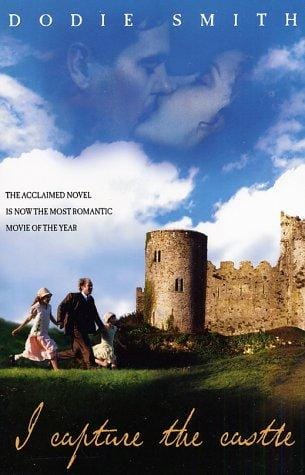Exploring "I Capture the Castle": The Timeless Charm of Dodie Smith’s Classic
Discover the plot, themes, characters and enduring appeal of Dodie Smith’s classic coming-of-age novel 'I Capture the Castle' in this concise review.

Introduction
Since its first publication in 1948, Dodie Smith’s novel I Capture the Castle has enchanted generations of readers with its witty narration, vivid characters and evocative English countryside setting. Often hailed as a coming-of-age masterpiece, the book chronicles the eccentric Mortmain family through the candid journal of seventeen-year-old Cassandra. This 800-word article offers a comprehensive, SEO-friendly review and analysis of the novel, exploring plot, themes, characters, literary style and cultural impact to explain why I Capture the Castle remains a perennial favourite.
Plot Snapshot
The story unfolds in the 1930s inside a crumbling Suffolk castle rented by the impoverished Mortmains. Cassandra keeps a series of notebooks in which she "captures" her family’s daily life. Her father, James Mortmain, once a celebrated novelist, now suffers from crippling writer’s block; her stepmother Topaz embraces bohemian ideals; her older sister Rose dreams of escaping poverty through marriage. When wealthy American brothers Simon and Neil Cotton inherit the surrounding estate, romantic complications ensue. Rose schemes to wed the reserved Simon, while Cassandra unexpectedly develops feelings for him, forcing her to confront loyalty, longing and the bittersweet realities of adulthood.
Major Themes
Coming-of-Age
At its core, I Capture the Castle is a nuanced coming-of-age tale. Cassandra’s diary traces her transition from adolescent observer to self-aware young woman. Her emotional honesty allows readers to experience first loves, disappointments and ethical dilemmas alongside her, making the novel relatable across decades.
Class and Social Change
Set between the World Wars, the narrative highlights England’s shifting class structure. The Mortmains’ genteel poverty contrasts sharply with the Cottons’ New World affluence, illustrating how wealth and social mobility were being renegotiated. Smith critiques both rigid aristocratic expectations and opportunistic marriages of convenience.
Art and Creativity
James Mortmain’s writer’s block and Cassandra’s burgeoning literary voice frame a meditation on creativity itself. The castle, simultaneously inspiring and decaying, symbolizes the fragile nature of artistic ambition. Cassandra’s journal becomes an act of self-creation, foreshadowing her potential future as a novelist.
Character Analysis
Cassandra Mortmain is one of literature’s most endearing narrators. Her blend of romanticism and pragmatism invites empathy. Rose, often compared to Austen’s vain yet vulnerable characters, embodies the desperation bred by limited female prospects. Topaz, with her harp and affinity for moonlit communions with nature, offers comic relief while challenging traditional maternal roles. James Mortmain’s tortured genius underscores the fine line between brilliance and dysfunction. The Cottons, though catalysts for the plot, also represent the intrusion of modernity into an antiquated world.
Setting & Atmosphere
The dilapidated castle is more than mere backdrop; it acts as a character in its own right. Its drafty rooms, empty moat and towering turrets capture a fairy-tale aura tinged with realism. The rural English landscape—wildflower meadows, rain-soaked lanes and village fêtes—immerses readers in seasonal rhythms that mirror Cassandra’s internal growth. Smith’s vivid descriptions make the setting a sensory experience, ideal for fans of atmospheric fiction.
Literary Style
Smith employs a first-person diary format that feels immediate and confessional. Cassandra’s voice is witty yet unpretentious, alternating between poetic observations and hilariously mundane details. This stylistic choice lends authenticity and drives reader engagement, as the plot is filtered through her subjective lens. Moreover, Smith’s deft balance of comedy and poignancy evokes comparisons to Jane Austen and the Brontës while remaining distinctly modern.
Cultural Impact & Adaptations
I Capture the Castle enjoyed critical acclaim upon release and has since become a staple in book clubs and school curricula worldwide. The 2003 film adaptation, starring Romola Garai and Bill Nighy, introduced the story to a new audience, while numerous radio dramatizations and stage versions attest to its versatility. Contemporary authors such as J.K. Rowling and Nick Hornby have cited the novel as an influence, reinforcing its legacy within British literature.
Why Read It Today?
Modern readers continue to find value in Smith’s exploration of authenticity, self-discovery and familial bonds. The novel’s gentle humour and emotional depth provide a refreshing antidote to darker contemporary fiction, making it perfect for those seeking escapism without sacrificing intellectual substance. Additionally, its examination of gender expectations and economic precarity resonates strongly in the 21st century.
Conclusion
More than seventy years after its debut, I Capture the Castle retains an uncanny ability to capture hearts. Through richly drawn characters, timeless themes and an unforgettable setting, Dodie Smith crafted a novel that feels both nostalgic and strikingly relevant. Whether you’re revisiting this classic or discovering it for the first time, Cassandra Mortmain’s charming voice promises a reading experience that is as enlightening as it is delightful.



